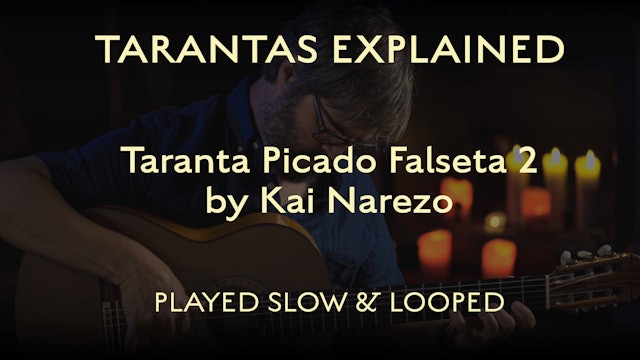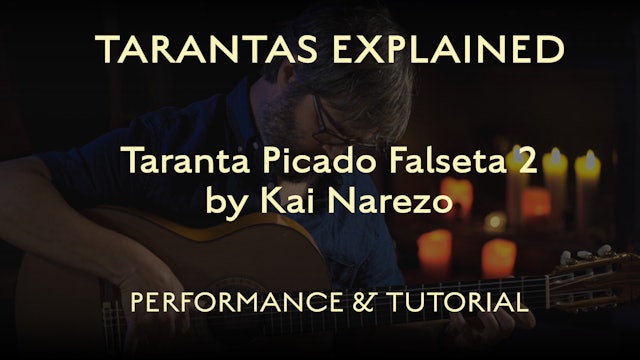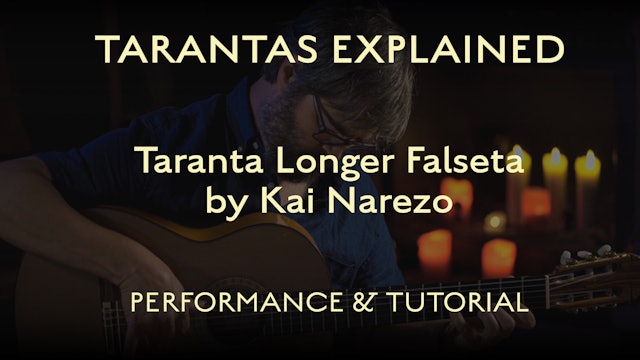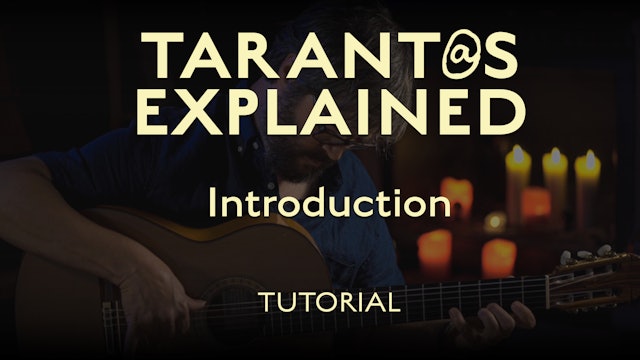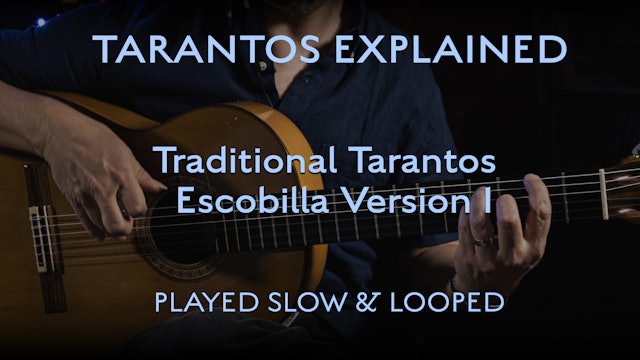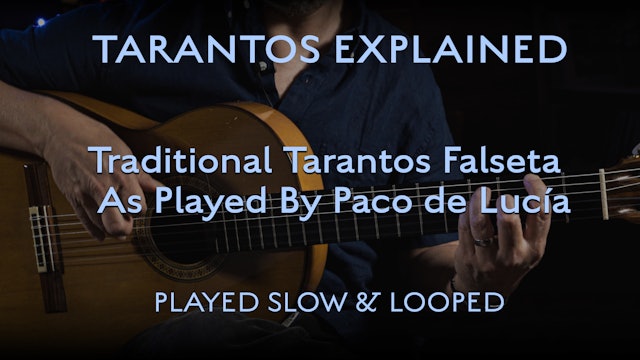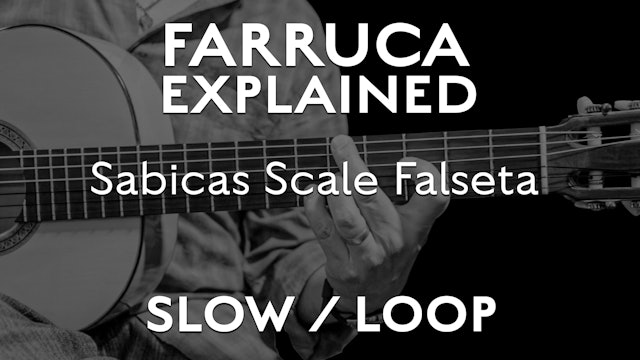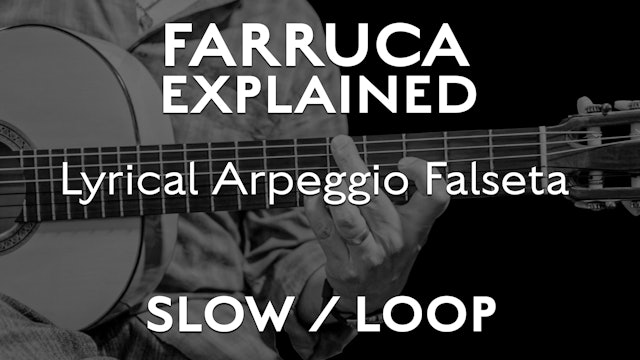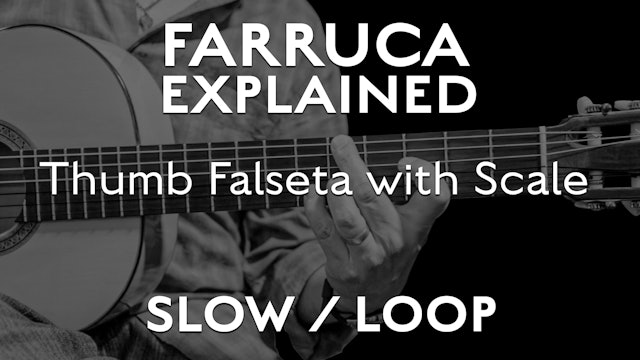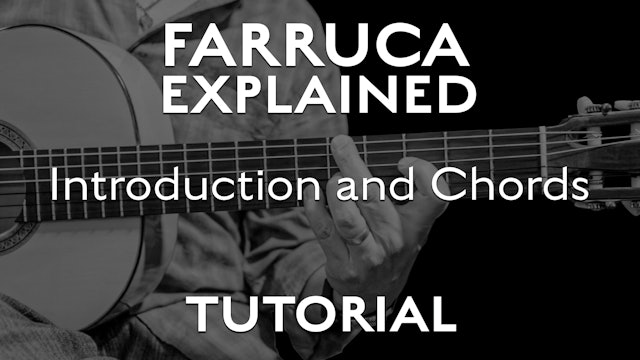Most Recent Videos
Here you'll find all of our videos in the order that we released them. This is not the order in which we recommend you study them, but rather a simple way to see when we added which videos chronologically.
-
Tarantas Explained - Traditional Intro Falseta - Played Slow & Looped
A simple but very effective intro for Tarantas that features a lot of the “connective tissue” ideas at the end, this one is also taken from Paco’s ‘Tarantos Populares,’ but is played as Taranta and not in strict Tarantos time. This is played slow and looped several times.
-
Tarantas Explained - Longer Falseta by Kai Narezo - Played Slow & Looped
A longer and somewhat more lyrical Falseta of mine that features a couple of left-hand stretches and little bit of a bunch of other techniques. This is played slow and looped several times.
-
Tarantas Explained - Kai Narezo Picado Falseta 2 - Played Slow & Looped
A picado falseta by Kai Narezo that features some long runs at the beginning and a bit of thumb towards the end. This is played slow and looped several times.
-
Tarantas Explained - Picado Falseta 2 by Kai Narezo - Performance & Tutorial
A picado falseta of mine that features some long runs at the beginning and a bit of thumb towards the end.
-
Tarantas Explained - Longer Falseta by Kai Narezo - Performance & Tutorial
A longer and somewhat more lyrical Falseta of mine that features a couple of left-hand stretches and little bit of a bunch of other techniques.
-
Tarantos Explained - Traditional Falseta as played by Paco De Lucia - Perf & Tut
A great and challenging falseta, again inspired by Paco de Lucia’s “Tarantos Populares,” this one features some left-hand stretches and quite a bit of Picado.
-
Tarantos Explained - Thumb Falseta - Performance & Tutorial
Inspired by Paco de Lucia’s “Tarantos Populares” recording, this is a simple Tarantos falsetas that uses employs standard thumb technique as well as some thumb/index alternation.
-
Tarantos Explained - Traditional Escobilla Version 1 - Performance & Tutorial
This is one version of a very traditional Escobilla for Tarantos. As I explain in the video, there are many (sometimes weird) ways of playing this falseta for dance, but the essential melody remains the same, and you can use any variation for solo guitar.
-
Tarantos Explained - Modern Escobilla - Performance & Tutorial
A more modern approach to the Tarantos Escobilla, you can think of this chord progression and arpeggio pattern as a jumping-off point for all sorts of Tarantos Escobilla material or play it as-is.
-
Tarantos Explained - Tarantos Escobilla Version 2 - Performance & Tutorial
Another traditional Escobilla falseta for Tarantos, more or less as played by Paco de Lucia on his “Tarantos Populares,” this one involves quite a bit of picado and some quick changes from picado to thumb.
-
Tarantos Explained - Tarantos Compás- TUTORIAL
While Tarantas is Libre, Tarantos is in compás, so you’ll want to learn your basic patterns before getting started with the rest of the Tarantos course.
-
Tarantas Explained - Connective Tissue - TUTORIAL
In this video we look at many of the most important figures used to connect falsetas Por Tarantas. As we don’t have compás to guide us, we have to learn a new way to connect our material. Here we explore the many little melodic bits traditionally used to do this.
-
Tarant@s Explained - Technique & Scale - TUTORIAL
We look at two techniques you’ll want to become familiar with before diving in to Tarantos or Tarantos and we also take a quick look at two ways to play the F# Phrygian scale.
-
Tarant@s Explained - Introduction - TUTORIAL
In this video we talk about what Taranta and Taranto are, what’s the difference, and what a Palo Libre is all about.
-
Tarantos Explained - Thumb Falseta - Played Slow & Looped
Inspired by Paco de Lucia’s “Tarantos Populares” recording, this is a simple Tarantos falsetas that uses employs standard thumb technique as well as some thumb/index alternation. This is played at 52bpm and looped several times.
-
Tarantos Explained - Traditional Escobilla Version 1 - Played Slow & Looped
This is one version of a very traditional Escobilla for Tarantos. As I explain in the video, there are many (sometimes weird) ways of playing this falseta for dance, but the essential melody remains the same, and you can use any variation for solo guitar. This is played at 52bpm and looped severa...
-
Tarantos Explained - Modern Escobilla - Performed Slow & Looped
A more modern approach to the Tarantos Escobilla, you can think of this chord progression and arpeggio pattern as a jumping-off point for all sorts of Tarantos Escobilla material or play it as-is. This is played at 52bpm and looped several times.
-
Tarantos Explained - Traditional Falseta as played by Paco De Lucia - Slow/Loop
A great and challenging falseta, again inspired by Paco de Lucia’s “Tarantos Populares,” this one features some left-hand stretches and quite a bit of Picado. This is played at 52bpm and looped several times.
-
Tarantos Explained - Tarantos Escobilla Version 2 - Played Slow & Looped
Another traditional Escobilla falseta for Tarantos, more or less as played by Paco de Lucia on his “Tarantos Populares,” this one involves quite a bit of picado and some quick changes from picado to thumb. This is played at 52bpm and looped several times.
-
Farruca Explained - Sabicas Scale Falseta - SLOW / LOOP
Farruca Sabicas Scale Falseta performance played slower and looped 10X times for easy play-along practice.
-
Farruca Explained - Kai Narezo Intro Arpeggio Falseta - SLOW / LOOP
Kai Narezo Intro Arpeggio Falseta played slower and looped 10X times for easy play-along practice.
-
Farruca Explained - Lyrical Arpeggio Falseta - SLOW / LOOP
Farruca Lyrical Arpeggio performance played slower and looped 10X times for easy play-along practice.
-
Farruca Explained - Thumb Falseta with Scale - SLOW / LOOP
Farruca Thumb Falseta with Scale played slower and looped 10X times for easy play-along practice.
-
Farruca Explained - Intro and Chords - TUTORIAL
A brief intro to what Farruca is all about, and a look at some of the chords and voicings we will be using in the course.



